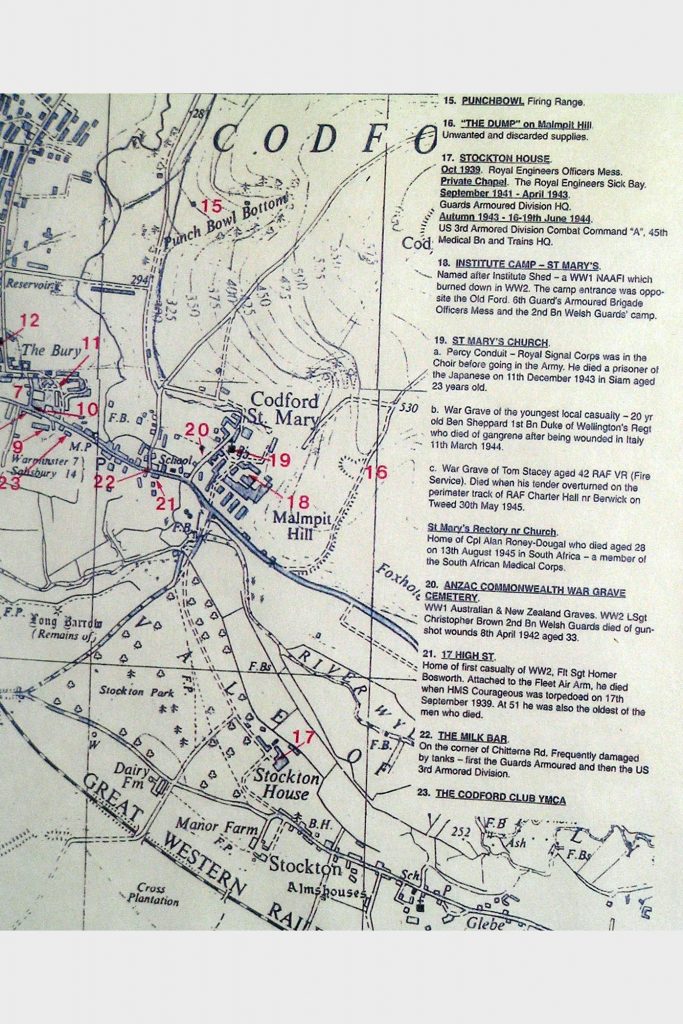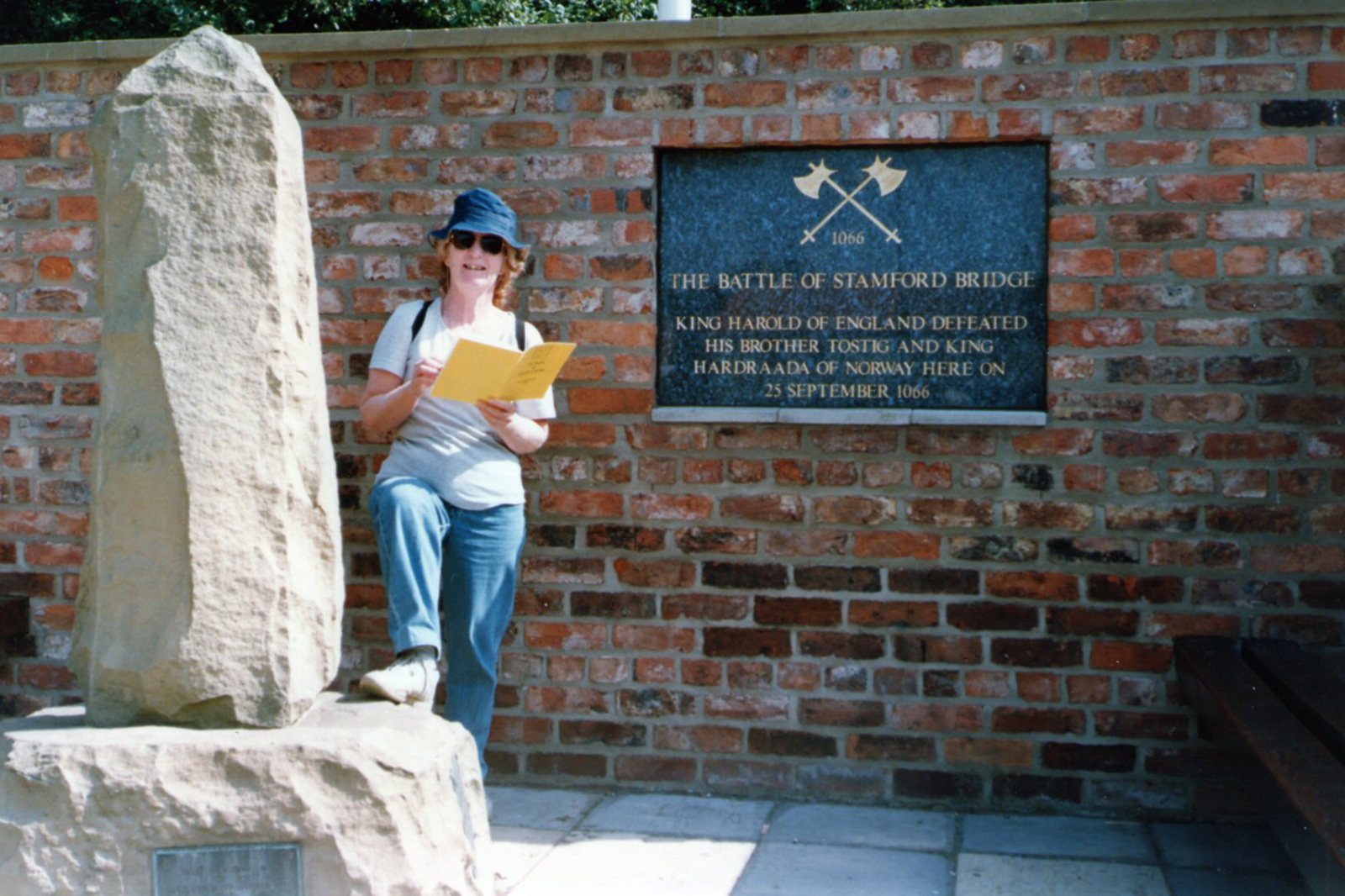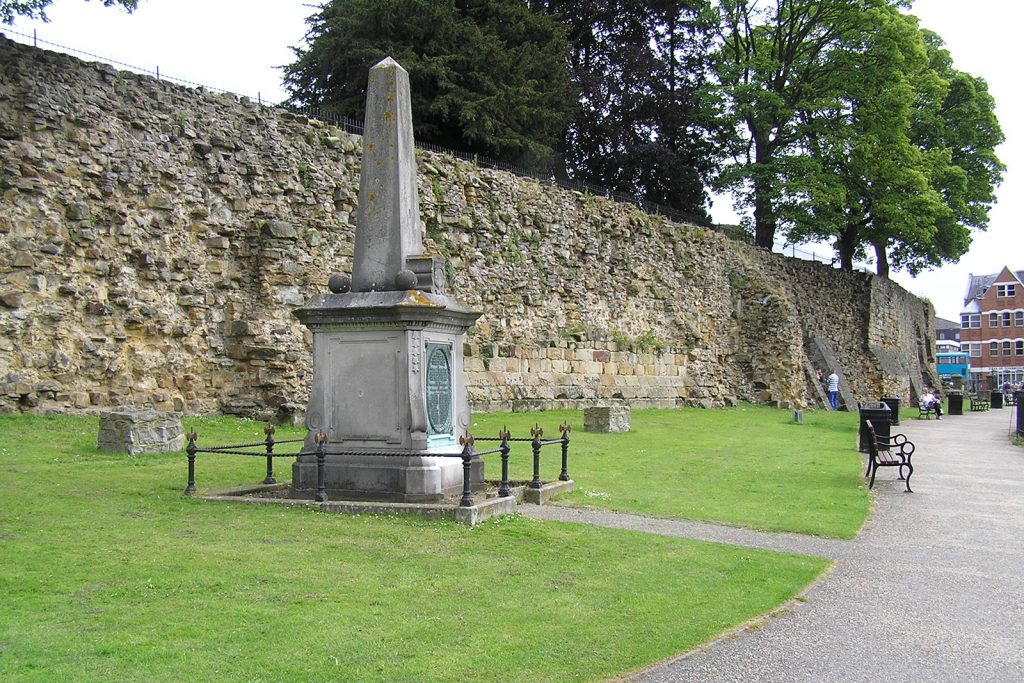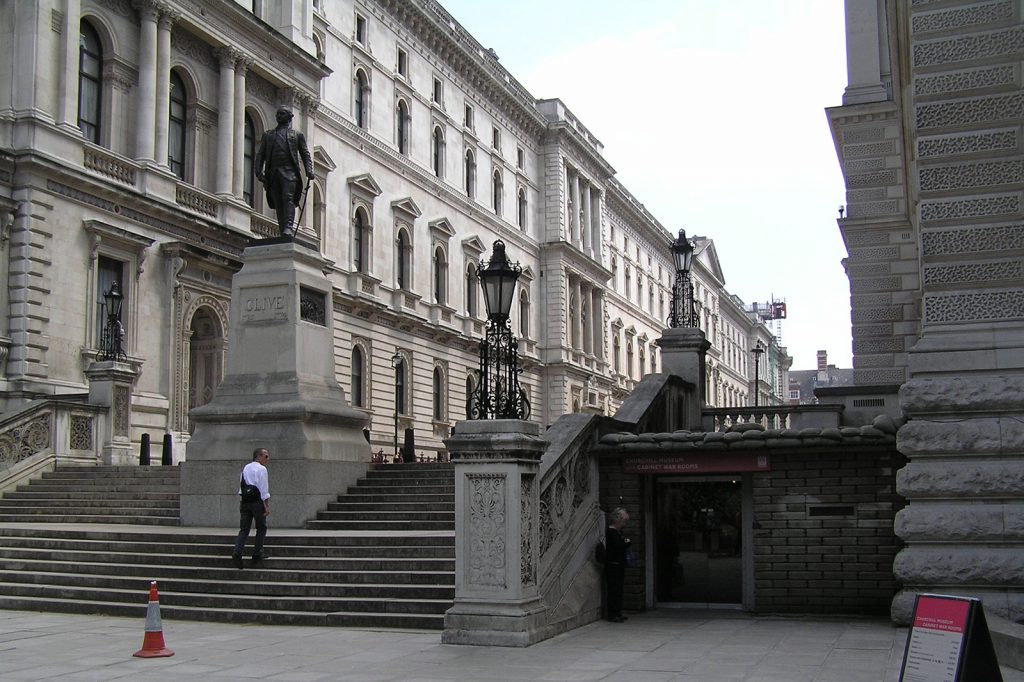England
The United Kingdom is awash with wonderful military memorials and museums that would take years to explore and record. Every church, churchyard, cemetery, school, village, and especially London, has statues, plaques and monuments to remember famous figures, regiments and battles.They continue to be erected. These photos are of a tiny portion that caught our attention. Every name on every memorial could tell a story.
Codford, Wiltshire

ANZACS in Codford. During World War One, the Wylye Valley became the centre of large training and transfer camps for tens of thousands of troops waiting to move to France. The Lamb Down Chalk Badge and the ANZAC (Australian and New Zealand Army Corps) War Cemetery are the only reminders of a period troops from Britain, Australia and New Zealand were stationed in and around the village.
Lamb Side Chalk Badge

Inscription. The Lamb Down Chalk Badge dates back to approximately 1917. The Australian Brigade Commander of the nearby garrison wanted to leave a visible Australian mark on the English countryside. Gazing out from the reading room of his headquarters at Stockton House, he came up with the idea of carving out a Rising Sun badge in the chalk hillside opposite, known as Lamb Down. The initial work on the badge was started by the 13th Training Battalion, Australian Imperial Forces (AIF). The badge was then embedded with green, brown and clear beer bottles to make it shine bronze like the badge worn on the Australian uniform.. Maintaining the badge became the focus of punishment parades and as a result the spur on which it is carved became ‘affectionately’ known as Misery Hill by Australian troops. The badge remained untouched until WW2 when it was covered over to prevent aircraft using it as a navigational aid. After the war it was uncovered. However, most of the glass had either washed away or sunk into the chalk below. The outline of the badge remains to this day.
Proudly worn in two World Wars, the Rising Sun, officially known as the General Service Badge of the Australian Imperial Forces, became one of the best recognised and honoured insignia of the allied armies and an integral part of the Digger tradition. Its distinctive shape, worn on the upturned brim of a slouch hat, is readily identified with the spirit of ANZAC.
ANZAC War Cemetery
Some details from the board: The War Grave Cemetery , which is the second largest in the United Kingdom, contains one World War Two grave and 97 ANZAC troops from World War One. 66 are New Zealanders and 31 are Australian. The men were evacuated from the front line and died in hospital here between 1916 and 1919.
Codford people
On the board a map shows the uses the various buildings in the town were put to, and details of some of the local men who died in WW2, including Lt Anthony Hancock, Royal Ulster Rifles, killed by a magnetic mine in Bremen 1945 and Lt Guy Westley a Yorks & Lancs officer who died on Gold Beach Normandy, 6th June 1944 aged 25.
There are more stories of local men who died in so many different ways. We read about:
- Percy Conduit, Royal Signal Corps, died as PoW in “Siam” (now Thailand) in 1942 aged 22
- Tom Stacey, 42, RAF VR (Fire Service) died when a tender overturned near Berwick on Tweed 1945
- Cpl Alan Roney-Dougal, 28, died in South Africa in 1945. He was a member of the South African Medical Corps
- Ben Sheppard, 1st Bn Duke of Wellington’s Regt who died of gangrene in Italy in 1944 aged 20
- L/Sgt Christopher Brown 2nd Bn Welsh Guards who died of gunshot wounds 1942 aged 33, and
- The oldest and 1st casualty of WW2, Flt Sergt Homer Bosworth 51, attached to Fleet Air Arm, who died when HMS Courageous was torpedoed 17th Sept 1939.


Hastings, East Sussex
Battle of Hastings
This battlefield is very well laid out, with many information plaques, and an audio guide is available. In the video clip below we wander around the area, including the Abbey.
Stamford Bridge, Yorkshire

King Harold of England defeated his brother Tostig and King Hardraada of Norway here on 25th September 1066.
We have tried to put together a short summary of what took place.
The main players
- King Edward the Confessor, was married to Edith, daughter of his powerful chief administrator Godwin, Earl of Essex. Of Godwin’s seven sons the second, Harold, succeeded him as King Harold 2nd.
- Harold chose his brother Tostig as Earl of Northumbria. But he upset the locals so much that some marched to Northampton, met Harold, then went on to Oxford. Though King Edward supported Tostig, his army would not, so Tostig was exiled. His place was taken by Earl Morcar.
- Tostig went to France and then Norway, seeking help to invade England and persuaded Hardraada, King of Norway, to join him.
The action
- Edward died on the night of 4th/5th January 1066 and Harold was elected as King.
- Tostig and Hadraada arrived in mid September near the mouth of the Tyne. Creating havoc as they went, they marched towards York. Morcar assembled troops but they were routed by superior numbers and Morcar was killed. York surrendered and Hardraada was made king of the city.
- On 25th September, Tostig and Hardraada went to Stamford Bridge. Why? At least six roads met at the ford so it was a suitable place to receive hostages from neighbouring towns. It was also a good place to send out foraging parties.
- Harold first heard of the invasion about the 10th or 12th of September. He had to decide whether to leave the South open to threat of an invasion by the Normans or his North unprotected from Tostig and Hardraada. He went North immediately, gathering local levies on the way. He reached Stamford Bridge on the 24th , to the surprise of the plotters.
- He bargained with them to no avail. The English then poured over the bridge towards the invaders. Meanwhile they had formed a wall, shield to shield.
- The English charged up the hill towards them but were repulsed. However, Hardraada was killed.
- A second charge resulted in Tostig’s death.
- Harold allowed the survivors to go back to Norway.
What next?
Harold now had to lead his weary army, depleted by the losses at Stamford Bridge, to meet William of Normandy. This took place ( it has been believed) at Semlac Hill, near the town of Battle, some miles from Hastings, on 14th October, 1066..
William had cavalry as well as foot soldiers, but Harold formed his shield wall and put up a strong fight. However the English were defeated, probably because Harold was killed.
Legend has it that this was caused by an arrow through his eye, some say because he had removed his helmet to show his men that he was still alive.
Harold was the last Anglo-Saxon king.
Tonbridge, Kent


Inscription reads:

Inscription reads: In memory of my dearly beloved husband Mounteney Kortright, Lieut. 3rd King’s Own Hussars who died 21st June 1900 of wounds received at Rietfontein Mine, South Africa. With calm and heroic courage he gave his life to save the Brigade from what would have been a terrible disaster.
Erected by friends to the memory of those whose names are inscribed below, Townsmen of Tonbridge and Old Boys of Tonbridge School.
Thy loyally gave their lives to Queen and country, and fighting in the war against the Boers helped to save South Africa for the Empire. 1899-1902
Their bodies are buried in peace, but their name liveth for evermore.
Among the names are:
- Lt/Col George Evan Lloyd, DSO. Born in Oct 1855, he was killed at Rhenoster Kop, 29th November 1900, after an extensive military career.
- Lt. Mounteney Kortright, 3rd (King’s Own) Hussars, died of wounds. His grave is in the Braamfontein Cemetery in Johannesburg.
- Lt Walter John C. Fletcher died at Kimberley on 18th Oct 1899.
Some eye-catching monuments




The Horse Guard Parade monument commemorates many units, including those on the front panel:
Regt of Foot Guards; Household Cavalry; Royal Regt. of Artillery; Corps of Royal Engineers; Royal Army Service Corps; Royal Armt Medical Corps; Household Division.
Many more are on the side panels.
Wales
Brecon, Wales
(South Wales Borderers / Monmouthshire Regimental / Royal Regiment of Wales Museum.)
This fascinating museum is packed with memorabilia, medals, paintings, dioramas and information about the Welsh involvement in the Zulu Wars, particularly Isandhlwana and Rorke’s Drift. There is a vast amount to watch and listen to.
The photo, VC and other medals of the heroes of Rorke’s Drift ( Lt. G Bromhead, Lt. Coghill, Lt. T Melvill, Pte. H Hook, Pte. F Hitch, Pte. W Jones, Pte. J Williams, Lt. ES Browne), the flag, dioramas, commentaries, and a huge collection of weapons are kept here.
Look at our video clip below to see the wealth of the displays.
Brecon Cathedral, Wales
1997. The Brecon Cathedral also has interesting memorabilia on display.
This short, rather noisy video clip shows information panels about Isandhlwana and Rorke’s Drift, plus plaques to Maj Gronville Bromhead,VC; Maj/Gen Degacher & Maj/Gen Sir Wilsone Black,KGB (Crimea & Zulu War); and Gen. Penn-Symons (Anglo-Boer War). There are several historic flags but they are difficult to identify.
Cardiff, Wales
1997. This very poignant Anglo-Boer War monument is outside the City Hall. An angel holds aloft an uprooted tree and another figure holds a harp with broken strings, to signify lives ended too soon. Unfortunately, it is too weathered to read the panels which are full of detail.
Opposite the Hall is also a statue to Lt/Col Lord Crichton Stuart, killed at Loos, and Viscount Tredegar, who led the 17th Lancers at Balaclava.